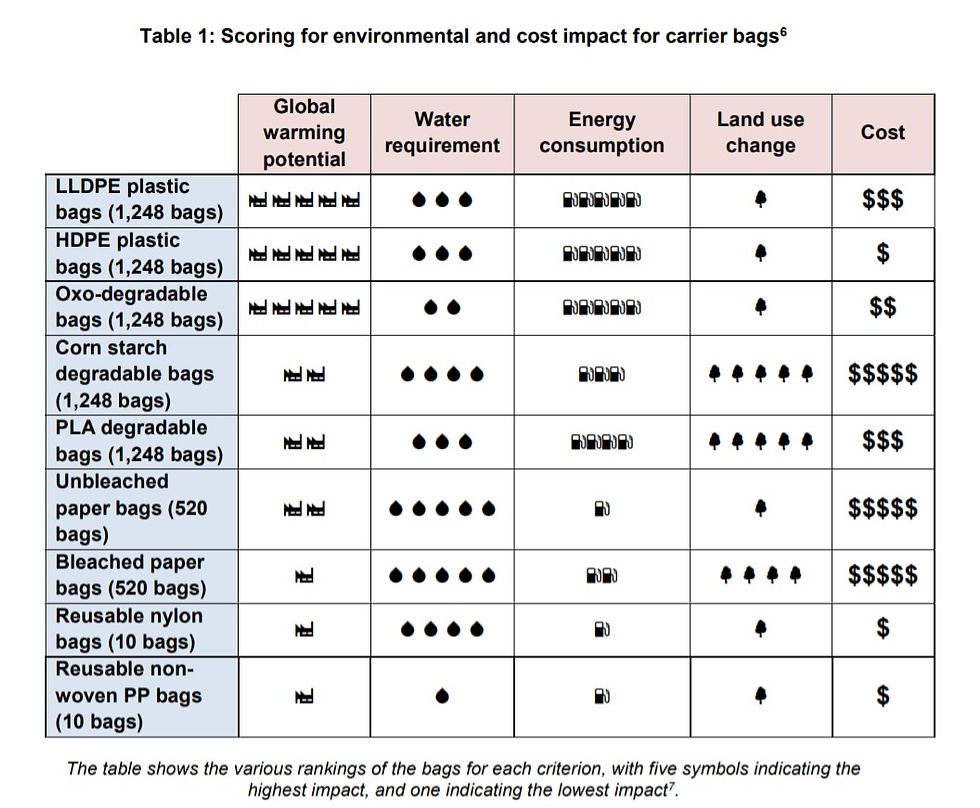Singapore: Never replace disposables with bio-degradable plastics
- Terese Anne Teoh
- Jan 30, 2020
- 2 min read
Updated: Dec 21, 2021

"CORN STARCH BIODEGRADABLE PLATE", the plates scream, its plastic outer casing proudly swashed in hues of green. Another quote of "Save the Earth" is scribbled below, and a couple of evergreen trees burst at the side for good measure. There is not even the word 'Disposable' on it, even though it is - because surely such pure natural goodness neutralizes any environmental impact.
Beside it stands a stack of styrofoam and plastic plates that are $2 cheaper. But you've heard about the horrors of plastic. You've done your research, and you know they can release dioxins, break down into microplastics and all that, and you don't want to be complicit in contributing to the problem.
In the end, you happily pick the corn starch ones, assuring yourself you've just made a quality sacrifice and completed another milestone for the environment. That's amazing.
It's not as simple as you think.
Use biodegradable disposables in Singapore - or perhaps in any other parts of the world - and you are not "saving the earth" at all.
Based on a life-cycle assessment study conducted by the Ministry of Environment and Water Resources (MEWR), biodegradable plastics can expend greater volumes of water and energy, and demand more land clearing.
And because Singapore incinerates all waste in its four waste-to-energy incineration plants, there is no hope for its degradation safely back into the soil.
The tables below, all screenshots from the life-cycle assessment study, summarizes how the various disposables compare in terms of environmental impact.



Let's draw out the highlights.
highlights
bags
paper bags use MORE water than plastic bags
oxo-degradable bags have metal ion additives - which is wastefully burnt away, to release toxins into the air
oxo-degradable bags will NOT degrade
oxo-degradable bags INTERFERE with the recycling process
PLA degradable and corn starch bags require CLEARING of large tracts of land and LARGE amounts of water
plates/cutlery
The corn used to make corn starch plate could have been used for FOOD instead!
corn starch plate is in fact beaten by styrofoam plate in terms of water efficiency, energy efficiency and land use change
the water costs above (see droplets) all include the washing of reusable plates over the projected five years
Other countries?
In countries that deposit of their waste in landfills, there is little hope that these plastic bags will degrade either, since a specific amount of air and sunlight are needed for its degradation.
Strangely enough, studies have also shown that the bio-plastic does not degrade when in the soil or in water as well.
So if they don't degrade, they behave just like another plastic item. You might find it at the Galapagos islands soon enough. only that they are relegated Number Seven; blacklisted as a non-recyclable.
last words
The best option would still be to use reusables, so that as little waste can be generated as possible.
Unfortunately, as a nation we're still much better at urging people to save water, not save the trash.









Comments